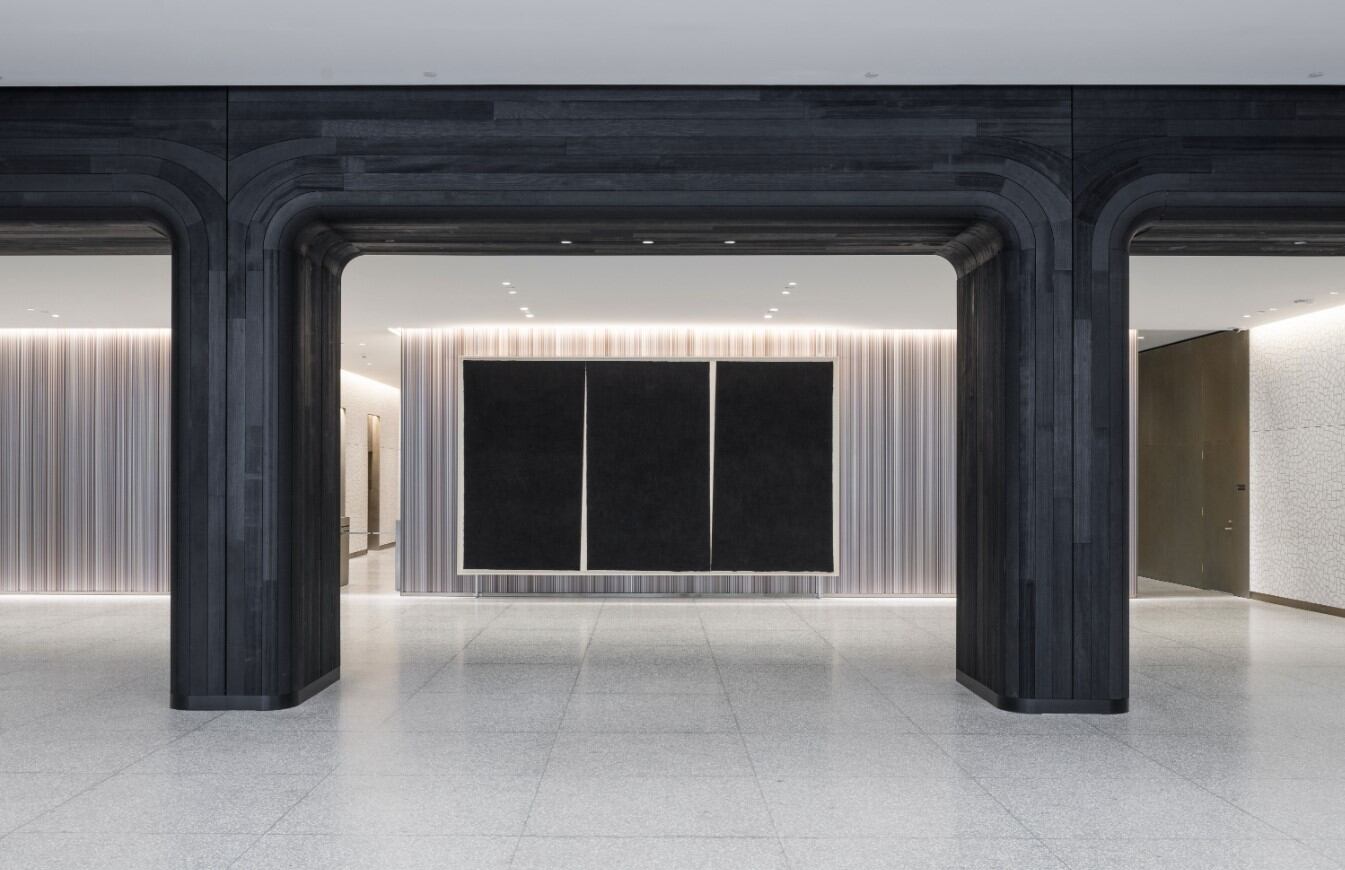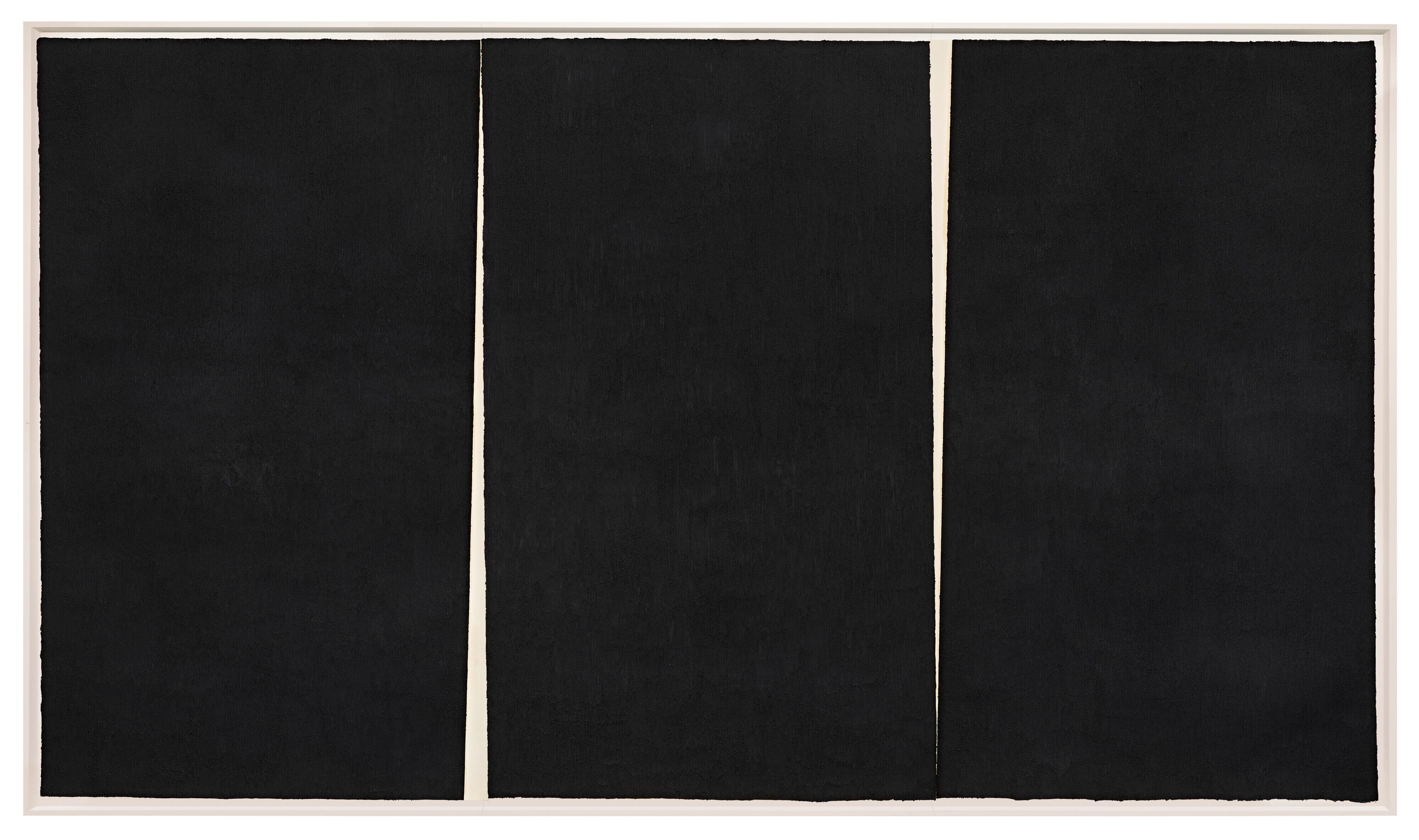Double Rift #4, 2011
Richard Serra | New York


Richard Serra
Double Rift #4, 2011
Paintstick on Japanese handmade paper
109 ½ x 193 ½ inches
About the Artist
Among the most influential artists of the twentieth century, Richard Serra redefined the practice of sculpture over a fifty-year career. The son of a shipyard pipe fitter, Serra was born in San Francisco in 1938 and worked in steel mills in his youth. His early works focused on the physical properties of industrial materials such as lead, steel, and rubber. Serra moved to New York City in 1966, and over the next decade manipulated these materials in ways that radically expanded the concept of what a sculpture can be, for example, in his early Prop pieces, which consist of lead plates balanced against each other, held up only by gravity. These sculptures eventually led to monumental, technically unprecedented steel works, such as the iconic Torqued Ellipses, which are comprised of contorted steel plates that destabilize viewers’ experience of space as they navigate amongst shifting sculptural volumes.
Serra has been the subject of countless museum exhibitions, including two separate retrospectives at the Museum of Modern Art, New York, nearly twenty years apart: Richard Serra/Sculpture (1986) and Richard Serra Sculpture: Forty Years (2007); while the Metropolitan Museum of Art, New York, presented a major retrospective dedicated solely to Serra’s drawings: Richard Serra Drawing (2011). Large-scale, permanent sculptures by Serra can be found in cities and museums across the globe, ranging from his eight-part, awe-inspiring installation The Matter of Time (2005) at the Guggenheim Bilbao, to one of his last large-scale works, East West/West East (2014), which spans nearly a kilometer of desert in Qatar.
About the Work
Drawing was integral to Serra’s practice. Beginning in 1971, he made drawings exclusively with black paintstick (a material comprised of oil, wax, and pigment) and often used a meat grinder to render the paintstick into a fluid substance which he then applied across sheets of paper. In the words of The New York Times’ Roberta Smith: “Few artists have pushed drawing to such sculptural and even architectural extremes as Serra. He has magnified the medium with immense black shapes that sit directly on the wall, their absorptive darkness forcing the space around them to expand or contract.”
Double Rift #4 belongs to a series of multi-part drawings composed of thickly applied ground-up paintstick, punctuated by “rifts” of thin vertical triangles where the underlying paper is left visible. These ruptures occur at the juncture of the sheets of paper, evoking the geological term for a break in the earth’s surface caused by shifting tectonic plates. Among Serra’s most majestic and largest works on paper, the Rifts debuted in 2011 at the Menil Collection in Houston and have since been exhibited across the world.